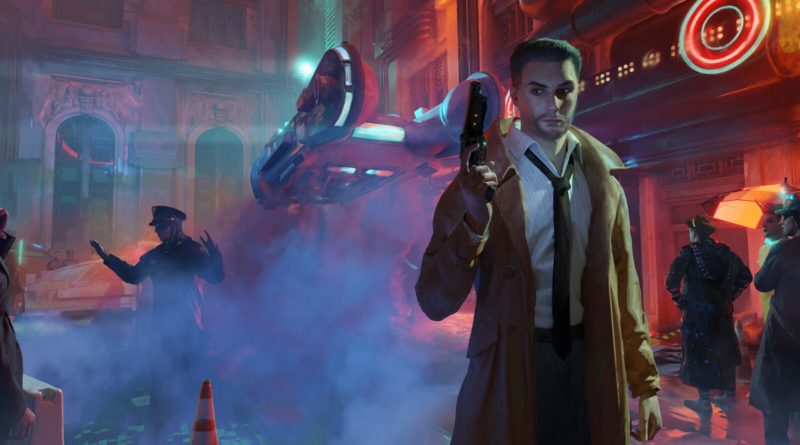Blade Runner: Enhanced Edition Review (PS4) – Retire It
Adapting any film into a video game is a hard task, let alone something as cult as Blade Runner. The 1982 sci-fi classic covers many themes under the guise of “cop kills robots”, making conveying those into a game more challenging.
Initially released fifteen years after the film (well, its original cut), Blade Runner the game did well for a point-and-click, yet suffered from property rights issues preventing any reissues until 2019 at the earliest. Ironic, given that that’s when the movie and game are set.
Now, forty years on from the movie’s launch, Blade Runner (the game) has been given the enhanced treatment and a console port. Does it pass the test to blend in with other classic and contemporary remakes, or is it overdue for retirement? Let’s find out.

We Need The Old Blade Runner Back
If you’re unfamiliar with what this universe is about, allow us to bring you up to speed: Replicants, androids designed to look human, are created with limited lifespans. Most accept this, or are unaware, but some go rogue and escape whatever menial job they’re given. In the film, four of the advanced Nexus-6 Replicants escape an off-world colony to seek their creator, Elden Tyrell, to extend their four-year lifespans. The titular cops, played by Harrison Ford as Rick Deckard, are tasked to “retire” them.
The game, which runs alongside the film (more indirectly than intertwined) has players as Ray McCoy, another Blade Runner, tasked with hunting Replicants who are also committing crimes. The crimes in question begin [in game] with the murder of exotic animals, a rare commodity in the bleakness of 2019.
Shortly after, and this isn’t a spoiler but framing device (pun intended), McCoy is hunted for a murder he didn’t commit. From there, unlikely allegiances are formed, trusts broken, as well as ambiguous themes set by the film are also fed to the player.
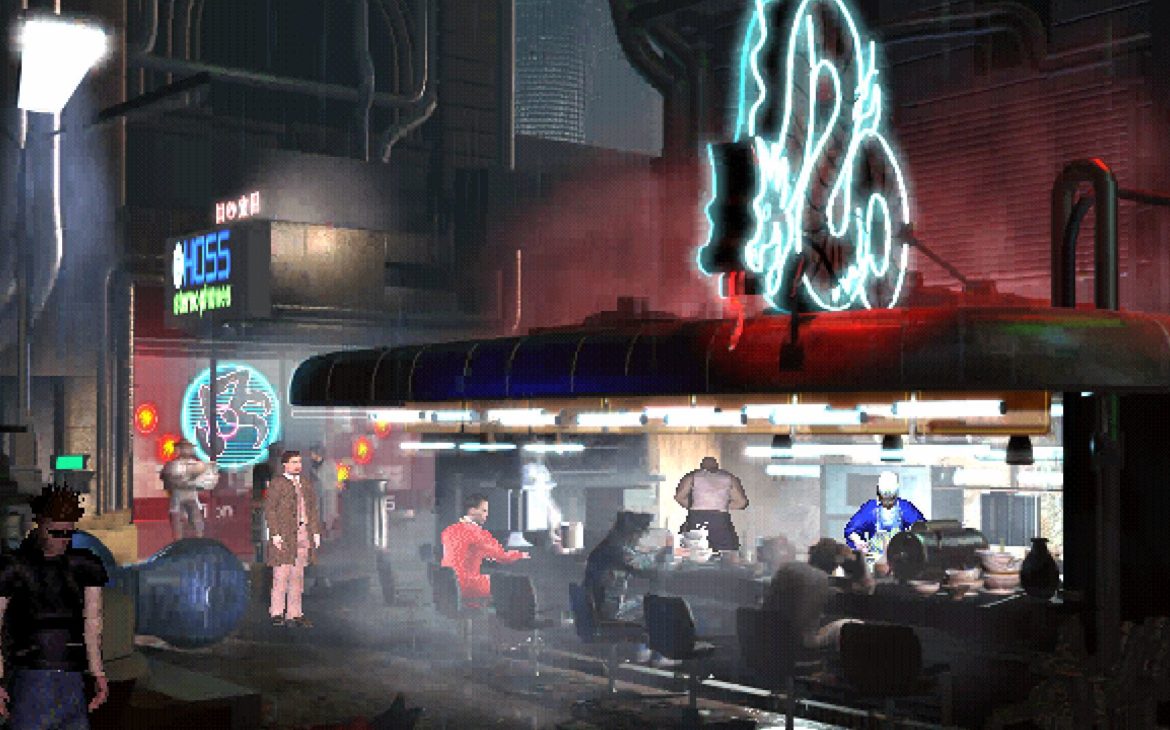
Investigate The Scene
Rather than give away any more of the story, let’s instead look at what kind of game this is instead. Whilst the screenshots make it look like a third person adventure, it’s actually point and click over the backdrop of an adventure game. That is to say: McCoy stays static until you, the player, move him otherwise.
A grey arrow will let you move McCoy to that spot, green signifies something to interact with, whilst blue is an exit/transition screen. Red is for combat, but that’s only for certain times. You can’t shoot until the reticle is red, so no accidentally (or “accidentally”) retiring anyone.
The backgrounds themselves are static-ish, in that they’re not fully pre-rendered like the Resident Evil GameCube remake, but not completely flat either. Think Fear Effect, if you know your obscure references. McCoy will only interact with highlighted objects, so there’s no benefit to clicking everywhere just to see what, err, clicks.
But that said, it doesn’t hold your hand. You could be slowly scanning the screen with the left thumbstick just to find one tiny, otherwise unseen interactive prompt. Remember, this is from an era of very old point-and-click, don’t expect Dishonoured levels of obviously highlighted objects.
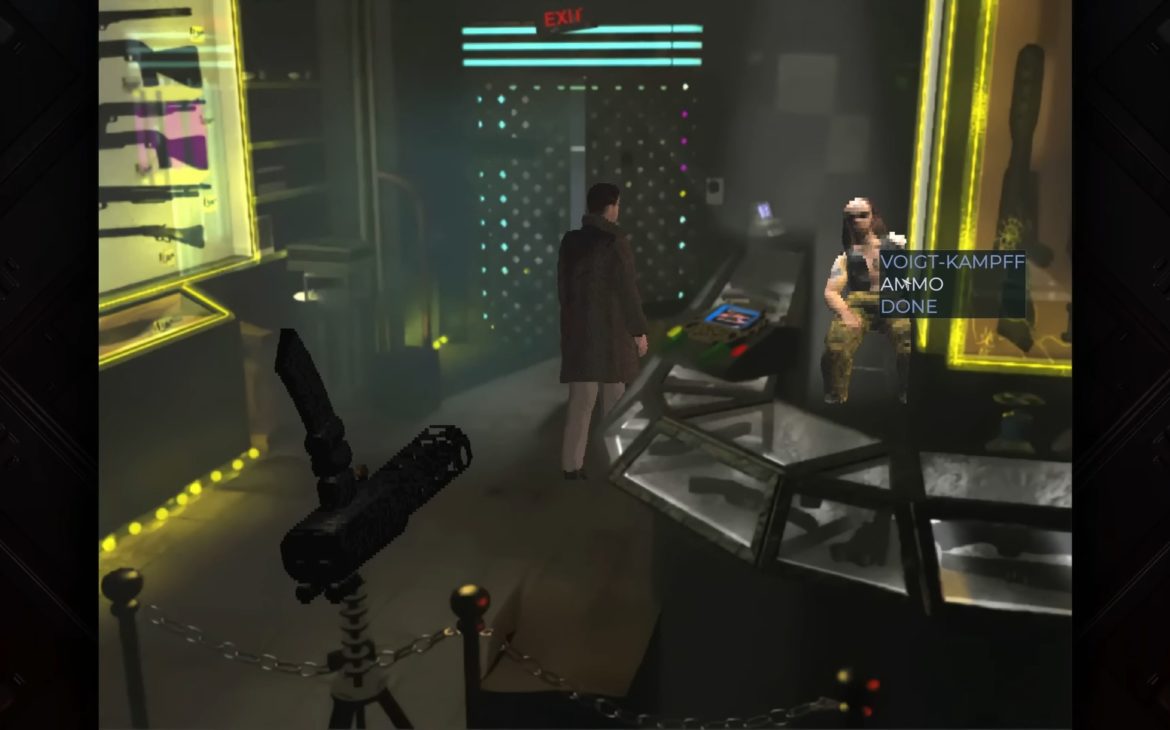
You’re In A Desert, Walking Along In The Sand…
The other part of the game is the interrogating and assessing of potential Replicants. Well, interrogating witnesses, persons of interest and the occasional bystander too, but the Replicants are the story-drivers.
In that regard, Blade Runner delivers a fairly standard affair. McCoy looks for clues, and in turn, will work his way through a checklist of questions for those that players can interact with. Again, nothing mind-blowing here: work your way through, ticking off evidence-based questions as they appear/McCoy has found them.
It’s the Voight-Kampff tests that make it interesting. Imagine a proto-L.A Noire, in which asking the right questions can lead to deductive reasoning, the wrong ones can… well, not end very well for detective McCoy. Again, hard not to spoil (even if you have seen the film).
To use the film as comparison again, the game does also try and maintain that “film noir” detective style of gaming. However, a lot of it just devolves into clicking a lot of things and hoping the cursor goes green.
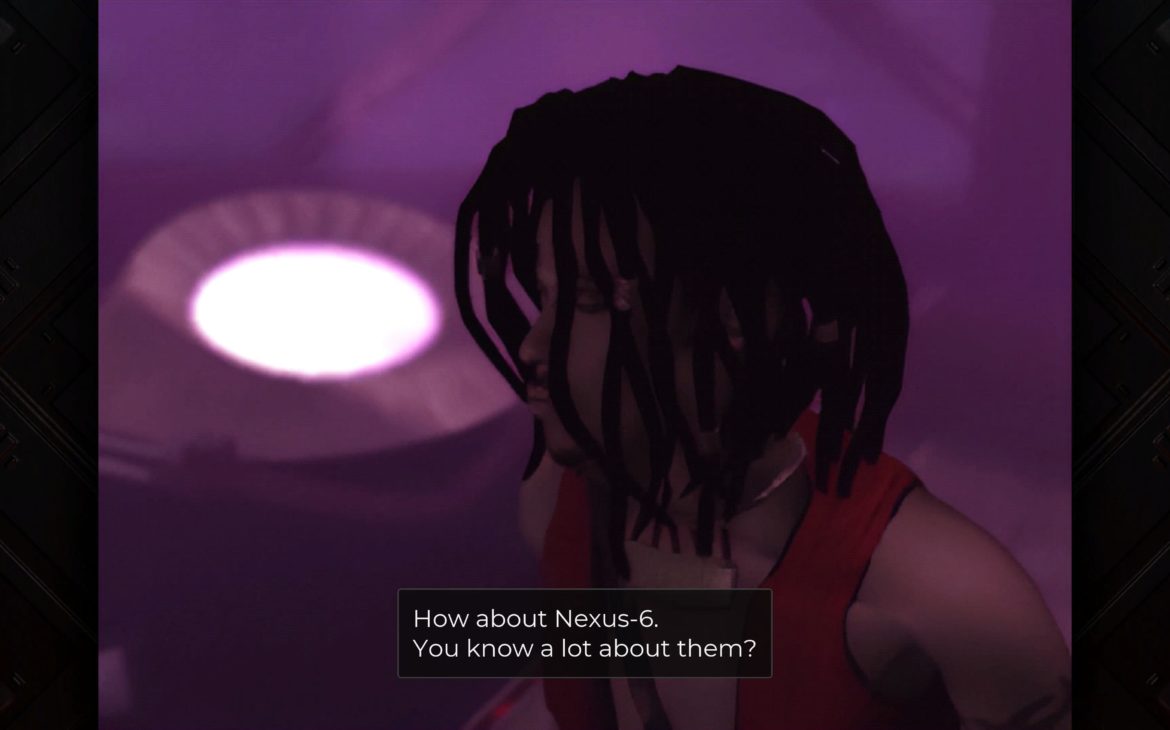
More Retro Than Retro
The unfortunate problem, which ties in with the “keep on clicking” gameplay, is the presentation of the game. If I were reviewing this in 1997, I would have called it an impressive looking game. However, twenty five years later and time has not been kind to Blade Runner.
Back then, with its blend of voxel-like graphics, FMV (animated video) integration and early Parasite Eve-style models, it would have looked great. But it seems to have barely been brought up to current standards, bar some texture smoothing, that makes me wonder what has been done. Which is a shame, as there are some moments that shine.
Tyrell’s office, famous for the introduction of Rachael, “More human than human” and the stunning vista, does look great. However, with the ugly character models imposed over like an old sticker book, it’s a somewhat disjointing gaming experience.
The same juxtaposition applies to the audio too: it’s got that classic score, with memorable Vangelis tracks too, that evoke that nostalgia for the film. The voice acting, by contrast, all sounds really phoned in. But my biggest grievance? McCoy himself.
Deckard (and by extension Harrison Ford), is a reluctant hero. He’s gruff, he doesn’t say much, and it adds to the tone. McCoy, on the other hand, is a wise-cracking tool. Cracking jokes at Tyrell’s expense, not taking anything seriously, things like that. It just doesn’t feel like what a Blade Runner game should project.
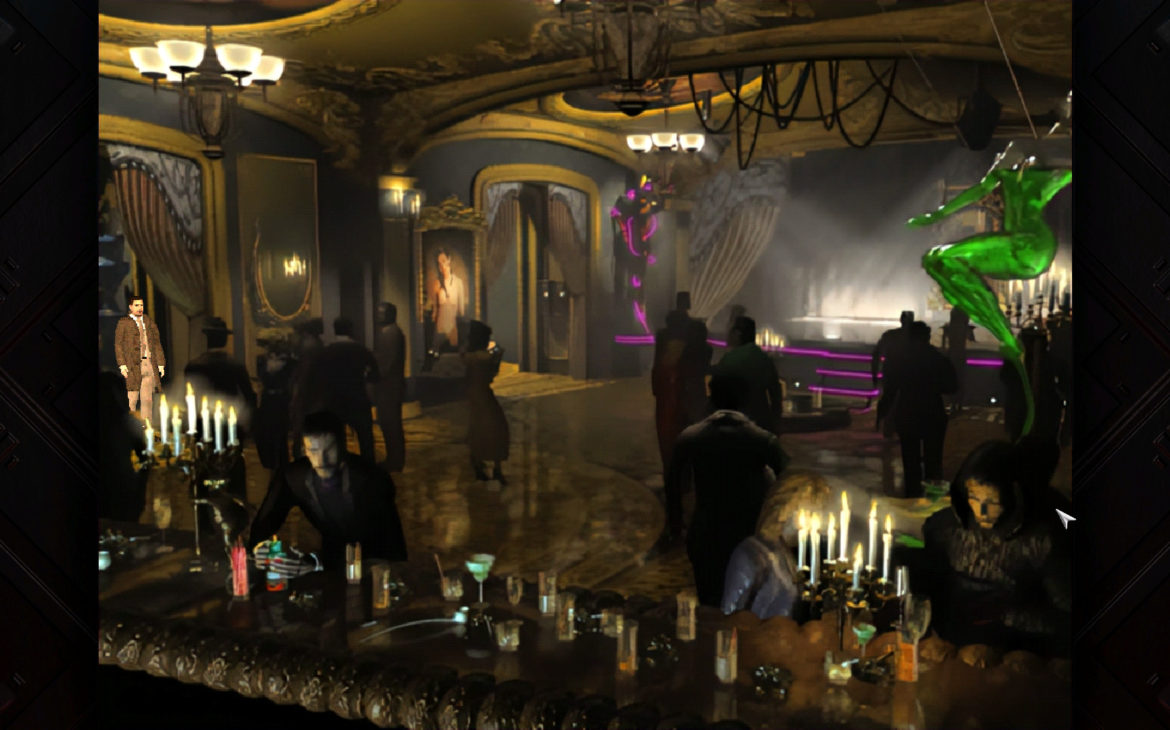
How Long Do I Live?
It’s not just the dodgy voice acting that irks me in this, it’s also how awkward the whole game feels to play. Yet I don’t want to rely on, “Well it is a twenty five year old PC game, what did you expect?” either. It could be better implemented, especially for consoles.
Graphically, it’s still hard to see the clues I’m meant to find in each area. In fact, I had to consult a walkthrough to find one or two at different points. It’s only when you know where they are that makes you think, “Oh, is that it?” and honestly, that’s not the feeling you want for missing it.
It’s also got some extremely fiddly, somewhat prototype quick-time events. Yes, even preceding Shenmue, but these are less obvious. Talking to a character who’s about to leg it, for example, can have you click for McCoy to move preemptively before he gets attacked. But there’s no prompt to do so, so you’ll either do it by chance or you’ve read ahead, spoiling the surprise.
Perhaps it’s an indictment of how used to modern gaming we are that thinking for ourselves seems alien, but we’re not psychic. But you’d think in the years of its release, and subsequent porting, some halfway agreement would have been met to help newcomers.
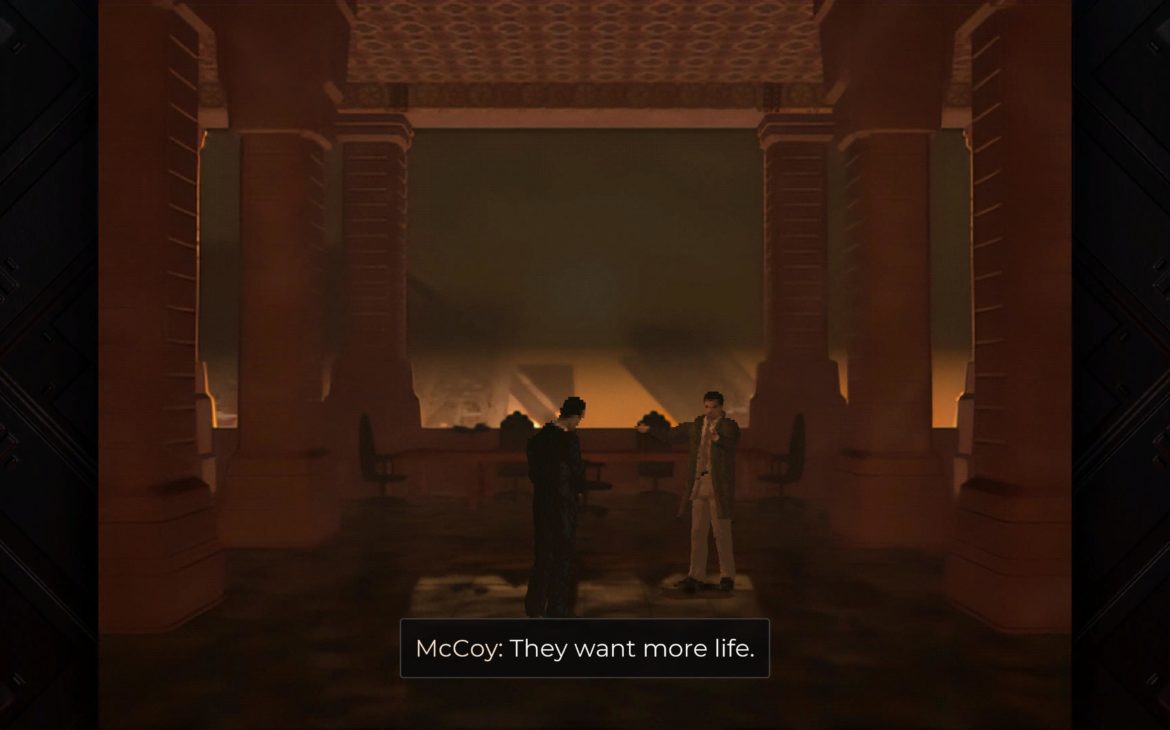
The Candle That Burns Twice As Bright…
It’s easy to see what Blade Runner is at least trying to accomplish, but at times it’s just too niche a game that it makes it difficult to be enjoyable. Bear in mind, this is from someone who adores both of the movies, so I’m no stranger to this universe.
Take Voight-Kampff tests, for example. In the movie, it’s explained that they’re not lie detectors, but devices used to deduce who’s a Replicant or not. Questions are asked to see how the subject reacts and so forth. In the game, it’s a similar piece of kit. But in the game, McCoy only gets to ask ten questions of varying pressure, there’s no real indication that you’re doing it properly.
If you’d played this in 1997, you’d probably know what to do. To someone coming in now? I can’t imagine they’d nail it on the first, second or fifth go. Having to save and reload each time you fail is not a slow process, but certainly an arduous and immersion-breaking one.
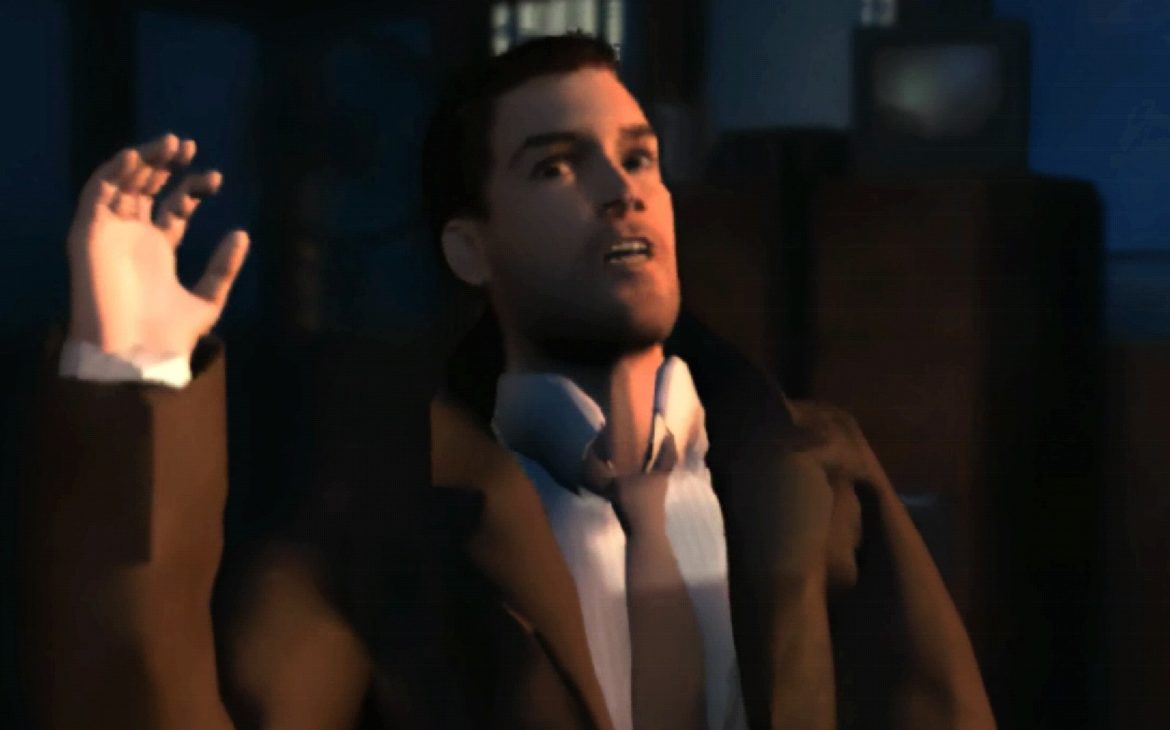
All This Nostalgia Lost, Like… Games In A Bargain Bin
In summary, I had trouble getting into Blade Runner, but that doesn’t mean I won’t tentatively recommend it. It’s not as easy as “If you liked the movie…” because, as mentioned, I hold the first film in my all-time top ten but I struggle with this game. I wanted to like it, and I think that’s the problem.
I was playing it with the same nostalgia that I have for the film, instead of accepting that it’s a janky, twenty five year old PC game. It has all the warts and trappings of the game it used to be, with barely any acceptances of how it would work better on a console.
The lack of guidance, the horrible menu interface and the awkward controls, coupled with the unflattering visuals do not make a good impression. If you accepted this in ’97 then you’ll probably have no issue with it here. But for a game that calls itself an “enhanced edition”, I’m failing to see what about it is meant to be enhanced. Hell, In Cold Blood on the original PlayStation looks better than this.
So to conclude, I can only recommend Blade Runner if you care that deeply enough about the Philip K. Dick short story’s universe to want to power through such an awkward game. But if you enjoyed the beautiful scenes and noir attitude of the movie, just go and watch that instead. But remember, the 2007 Final Cut version is the best one.
The game has had twenty five years to be transformed into something to wow fans of the series. Instead, it just feels like a lazy port with ugly character models, awkward controls, and an assumption you’ve played it before. Perhaps one for the hardcore Blade Runner fans, but not the newcomers.

Blade Runner: Enhanced Edition is available now on PlayStation 4 (reviewed on PS5), Xbox One, Nintendo Switch and PC.
Developer:
Publisher:
Disclaimer: In order to complete this review, we were provided with a promotional copy of the game. For our full review policy, please go here.
If you enjoyed this article or any more of our content, please consider our Patreon.
Make sure to follow Finger Guns on our social channels –Twitter, Facebook, Twitch, Spotify or Apple Podcasts – to keep up to date on our news, reviews and features.
